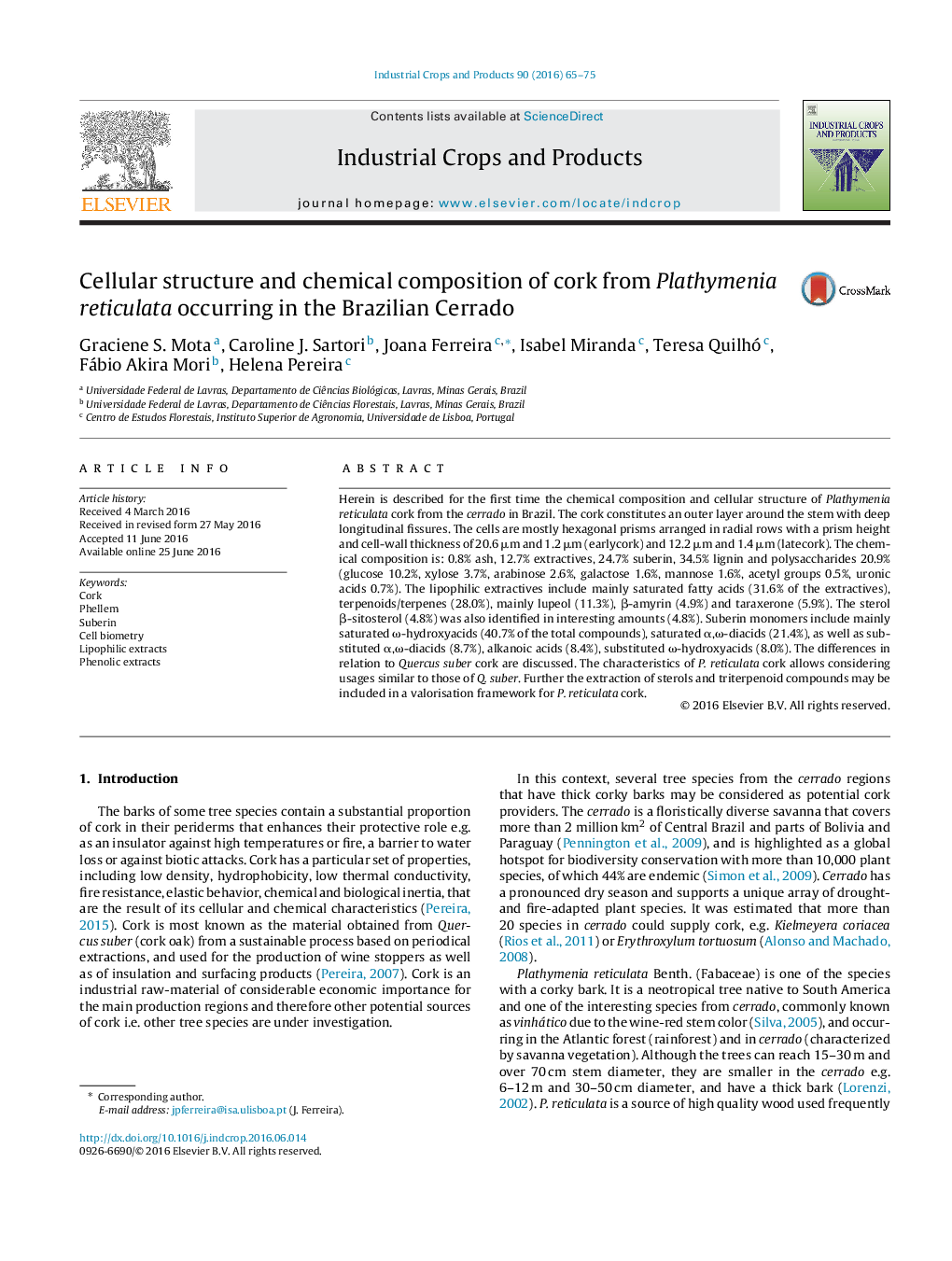| Article ID | Journal | Published Year | Pages | File Type |
|---|---|---|---|---|
| 4512093 | Industrial Crops and Products | 2016 | 11 Pages |
•Plathymenia reticulata is a source of cork from the Brazilian cerrado.•The cellular structure is similar to that of commercial cork of Quercus suber.•Suberin composition is dominated by saturated ω-hydroxyacids and α,ω-diacids.•Extractives include sterols e.g. lupeol, and triterpenes e.g. taraxerone.•P. reticulata cork may be used as Q. suber virgin cork in agglomerated products.
Herein is described for the first time the chemical composition and cellular structure of Plathymenia reticulata cork from the cerrado in Brazil. The cork constitutes an outer layer around the stem with deep longitudinal fissures. The cells are mostly hexagonal prisms arranged in radial rows with a prism height and cell-wall thickness of 20.6 μm and 1.2 μm (earlycork) and 12.2 μm and 1.4 μm (latecork). The chemical composition is: 0.8% ash, 12.7% extractives, 24.7% suberin, 34.5% lignin and polysaccharides 20.9% (glucose 10.2%, xylose 3.7%, arabinose 2.6%, galactose 1.6%, mannose 1.6%, acetyl groups 0.5%, uronic acids 0.7%). The lipophilic extractives include mainly saturated fatty acids (31.6% of the extractives), terpenoids/terpenes (28.0%), mainly lupeol (11.3%), β-amyrin (4.9%) and taraxerone (5.9%). The sterol β-sitosterol (4.8%) was also identified in interesting amounts (4.8%). Suberin monomers include mainly saturated ω-hydroxyacids (40.7% of the total compounds), saturated α,ω-diacids (21.4%), as well as substituted α,ω-diacids (8.7%), alkanoic acids (8.4%), substituted ω-hydroxyacids (8.0%). The differences in relation to Quercus suber cork are discussed. The characteristics of P. reticulata cork allows considering usages similar to those of Q. suber. Further the extraction of sterols and triterpenoid compounds may be included in a valorisation framework for P. reticulata cork.
Graphical abstractFigure optionsDownload full-size imageDownload as PowerPoint slide
